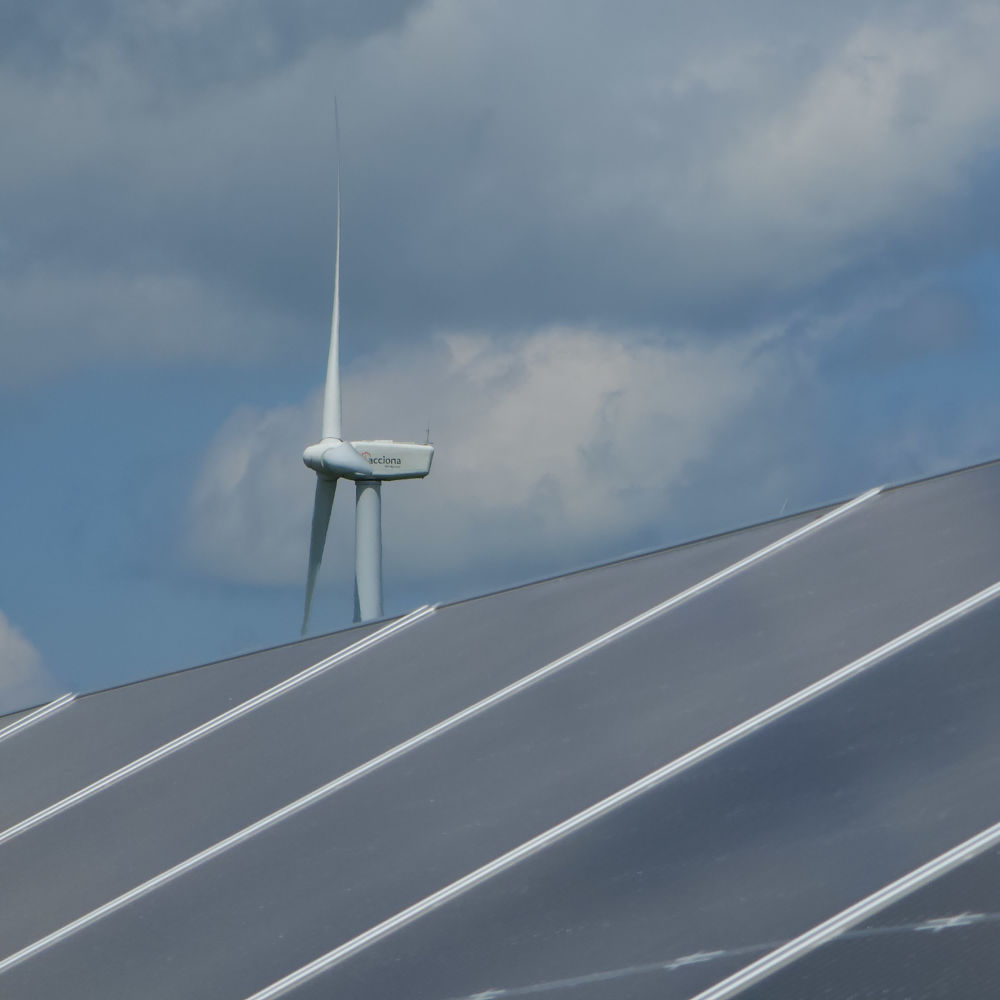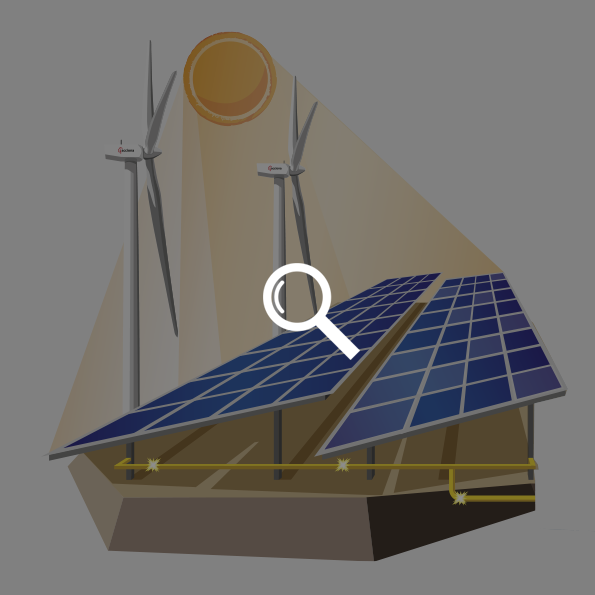Renewable Hybridization: When Wind and Sun Go Hand in Hand

The intersection between technological evolution and regulatory changes opens the door to solutions that have been considered for years in the renewable sector. This is the case in countries such as Spain, one of the first to combine the potential of wind and solar energy to optimize the capacity of the electricity grid. This is known as the hybridization of installations. What does it consist of? Basically, it involves wind farms and photovoltaic plants operating in a coordinated manner at the same location. Thus, the contribution of green power at the same point of connection to the electricity system will not be so conditioned by whether the wind is blowing or the sun is shining. And not only that, synergies reduce the environmental footprint of infrastructures and optimize the use of power grids.
Maximizing connection capacity has been a longstanding goal for renewable facility operators, especially for wind farms. By integrating complementary solar plants alongside wind installations, operators can significantly boost energy delivery without costly upgrades or grid saturation risks. Power grids are costly infrastructures, so trying to make the most of them makes sense.
Making the most of renewable infrastructure
Modern electricity systems are usually entirely secure, as with the Spanish system. In practice, they are designed to avoid blackouts or incidents due to grid congestion, making it possible to deliver more energy than initially planned to the authorized connection points.
Wind farms rarely reach their maximum authorized power when they are connected to the grid to deliver the energy generated. Even in times of high wind, when the wind turbines are operating at their maximum rated power, it is infrequent that the maximum authorized connection capacity is reached because there are always some losses in the transmission lines or due to the wind turbines’ own consumption. In addition, when there is less wind, part or all of the injectable capacity at a given point in the grid remains unused.
Given this untapped potential, the novel concept of hybridizing installations arose to take advantage of unused capacity at the connection points, without jeopardizing the safety of the electricity system.

A regulatory push for hybridization
Technological capacity alone is insufficient without strong legislative support, but substantial progress is being made on that front too. Spain took a pioneering step in 2020 by enacting a law (RD 1183/2020) that explicitly allows for hybridization projects of existing generation facilities using the same connection point and access capacity already granted.
This legal framework provides the necessary coverage for hybridization and streamlines the administrative procedures for such projects. The regulation introduces an abbreviated process for hybridizing installations with existing facilities with authorized grid connections, cutting processing times in half.
Main advantages of hybridization
As can be seen, the hybridization of renewable installations has several advantages, which can be summarized in the following points:
- It favors the construction of new renewable facilities and, consequently, compliance with international commitments to decarbonize the electricity system.
- Increases the penetration of renewables in the system by making better use of the grid’s capacity to absorb the energy generated in these facilities.
- It takes advantage of existing infrastructures, such as substations, power lines, accesses, etc., which reduces the environmental footprint and investment costs.
- By using complementary sources, electricity generation is more constant in a hybridized facility, which is positive for the balance of the power system. It also increases the capacity factor – the time in which a facility generates power – relative to the previous non-hybridized facility.
- Connection and start-up times are accelerated by speeding up the authorization procedure for new installations that hybridize with pre-existing ones.
Towards renewable (and smart) energy
The regulations permit the hybridization of different renewable technologies, but the prevailing scenario involves a new solar photovoltaic plant being combined with an existing wind farm. Spain is witnessing numerous projects adopting this approach, set to become operational in the coming months. ACCIONA Energía, a prominent renewable energy company in the country, has already identified hybridization projects totaling over 2,000 MW, with capacities ranging from 7 MW to 50 MW.
Initially, the idea was to complement wind generation using new photovoltaic plants, filling the capacity gaps not utilized by wind farms. However, advancements in energy management have led to a shift toward “smart operation.” In specific hybrid installations, an automated control system decides the energy contribution from the solar plant and wind farm based on factors like scheduled maintenance, grid requirements, and market prices.
Estimates from advanced studies on hybridization in Spain indicate that the combined energy output from a wind farm and a solar plant can increase by an average of over 189% compared to the wind farm’s standalone generation. Approximately 5% of the total energy generated cannot be injected into the grid due to connection point limitations, while the rest is successfully fed into the system.
Although wind farm hybridization with photovoltaic plants currently dominates, researchers are exploring other technological options to find the optimal combination for each scenario, including various generation sources and complementary technologies like energy storage.


